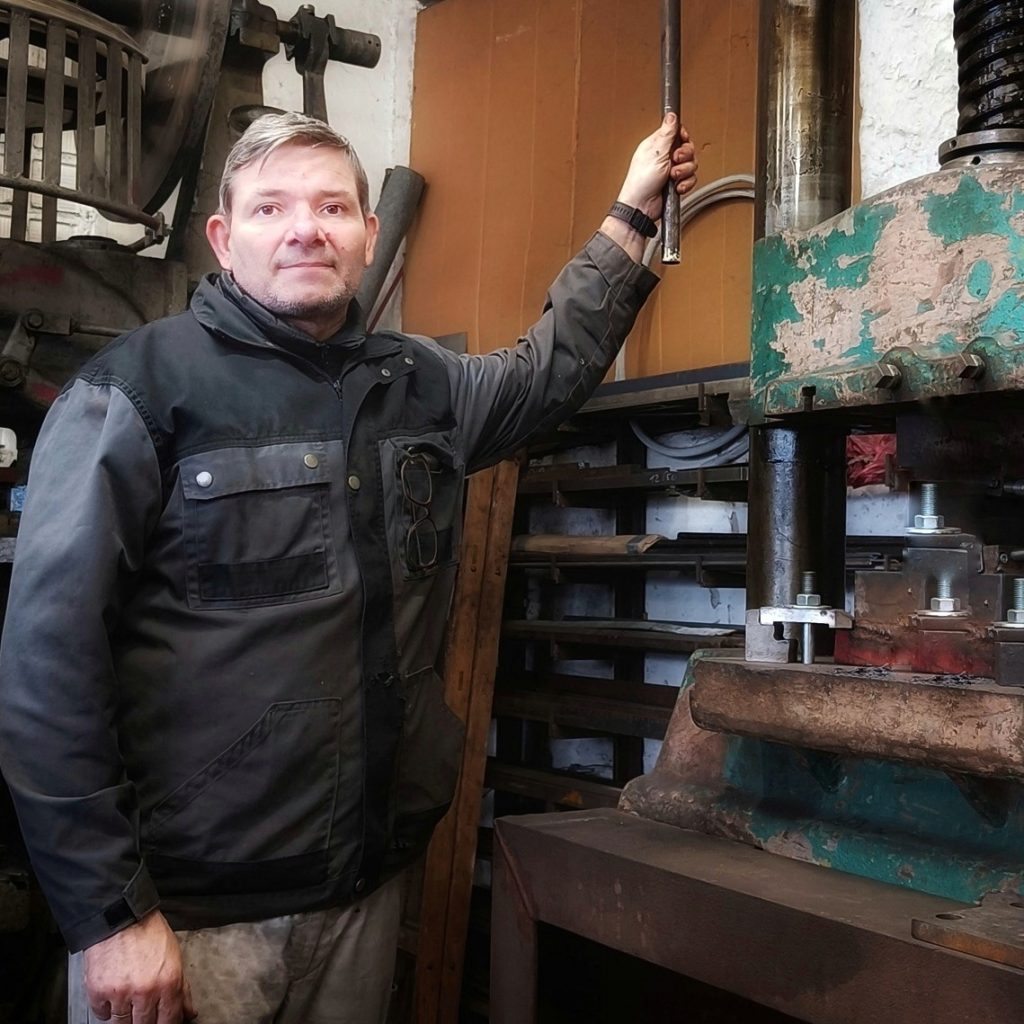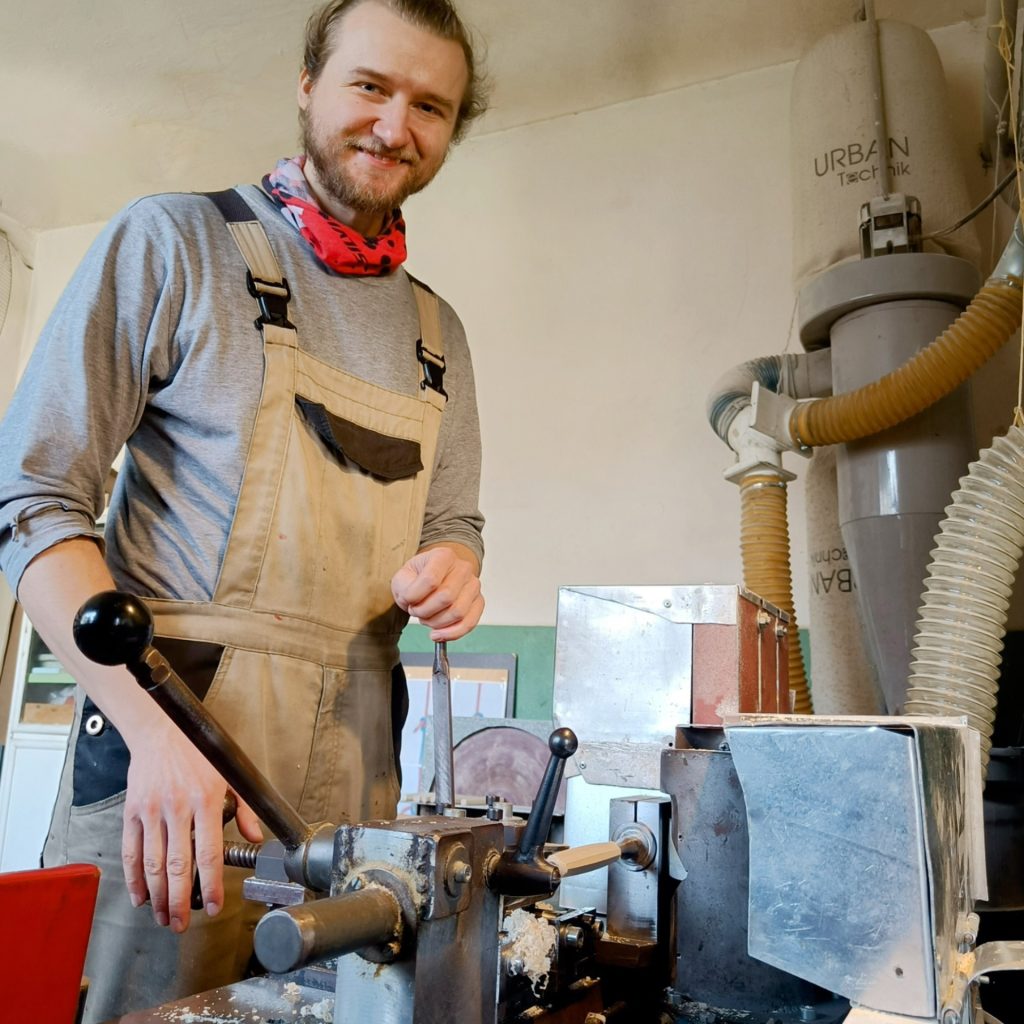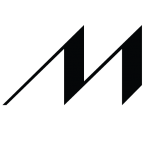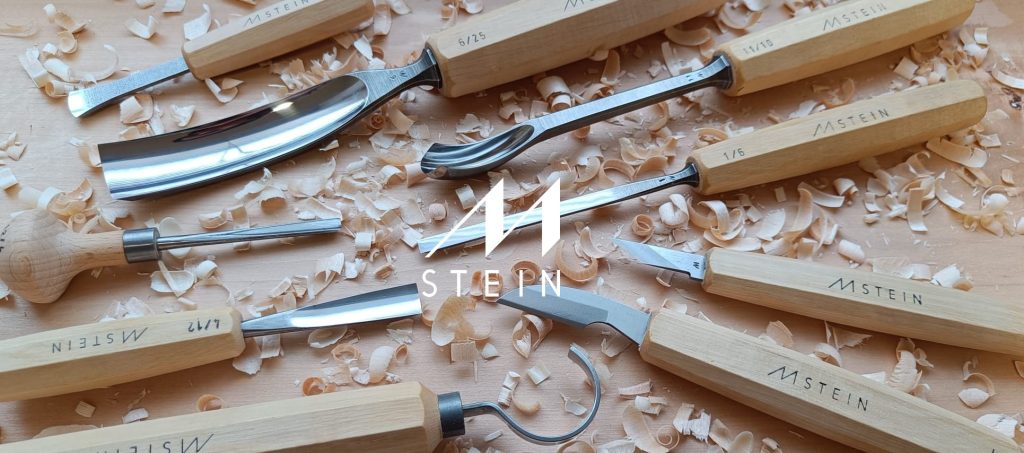

We manufacture woodcarving gouges by forging carbon tool steel. The starting material is steel rods with a diameter of 4 to 25 mm. We have been using Swedish alloy steel Arne for a long time, with a carbon content of 0.95%, manganese, chromium, tungsten, and vanadium.
The traditional gradual forging process we use to manufacture our gouges affects the structure of the steel, refining, compacting and aligning the grain, which increases the toughness and durability of the chisel or gouge.

This process improves the blade’s ability to resist lateral forces that occur when carving wood. The blade also becomes more resistant to chipping. At the same time, it must be hard and tough enough so that the gouge “holds its edge” and does not bend, but also remains flexible and is not prone to chipping. It must withstand normal hand carving even under high stress, such as cutting hard wood or knots using a mallet.
Master Pavol first forges bolster and the tang, parts which hold the blade in a wooden grip. The tang is then used for further manipulation. When pulling out the rod and stretching it, shaping anvils of a mechanical hammer are used. The complex shape of the chisel is created by gradual forging, flattening to a plane, and then bending the future blade of the gouge. This creates a base that is still rough, but the chisel has acquired its basic shape: a square tang, wide bolster, and a blade.
When forging and bending, we work in series of several dozen pieces. The blade is bent using shaping dies, with a different one required for each shape. Replacing these press inserts requires readjustment for each type of gouge. For small gouges, a small hand press is sufficient, while for large ones we use a 60-ton spindle press.
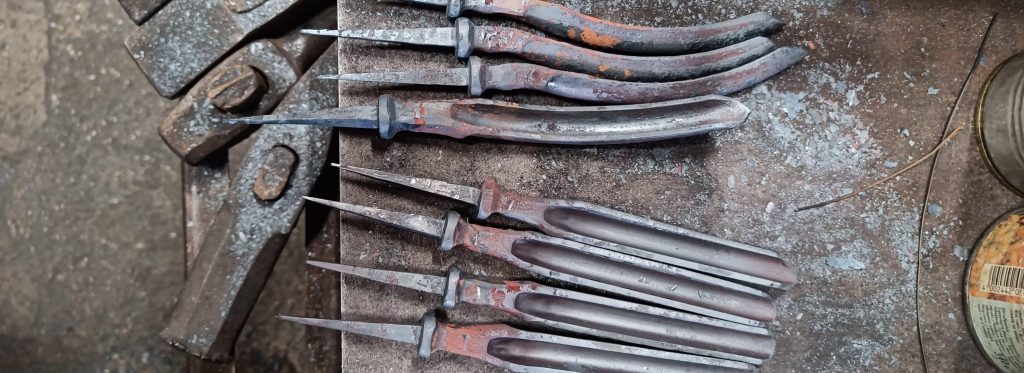
After forging, the gouges are partially hardened in air and by annealing them – heating them to a temperature of 700–750°C for several hours with slow cooling – we achieve the equalization of internal stresses that arise from bending and forging.
After annealing, the gouges are sanded to remove oxidised layers from the surface. This is followed by rough grinding to further remove decarburized surface layers, and then coarse grinding of the outer and inner surfaces, where the shape takes on its final dimensions and form. For each profile, we have prepared grinding wheels in the shape of the blade, which master Ivan uses to grind the inner part of the blade. Grinding gives the chisel elegance and precise shape.
To achieve a uniform shape, we use tumbling. This is a process of cleaning workpieces in a vibrating tub, where the chisel forgings are tumbled together with abrasive in an emulsion bath for several hours. This process rounds the edges (smooths the surface) and gives the chisels a uniform, finely polished and harmonious surface, making them pleasant to work with.
The semi-finished products prepared in this way are placed in racks, where they await joint heat treatment – hardening and tempering in a protective atmosphere in a professional hardening shop. After hardening, ARNE steel achieves a hardness of up to 65° HRc. It is then tempered to a hardness of 60-61°, which removes the internal stress caused by hardening and increases ductility, while blades become less brittle.
We finely grind and polish the inner surfaces of the already hardened chisels. Again, Ivan polishes the inner surfaces of each chisel on shaped fine grinding wheels. Hardened steel is difficult to work with, but a shiny finish can only be achieved after hardening.
The mirror-polished chisel then has its blade ground from the opposite side on a horizontal water grinder. Master Michal makes sure that our chisels are ready for work with a perfect blade. Our production is not automated, and each chisel and knife is ground by hand.

We attach handles of appropriate size, which we make from hornbeam, once the metal part is finished. The wood holds the tip securely in place, while the bolster resting on the handle limits the chisel and allows for rough handling with a mallet.
In addition, manufacturing in a workshop requires constant maintenance. Grinding wheels wear out, and the sliding surfaces of the machines need to be maintained regularly to maintain the precision of the machine part of production. Auxiliary tools, which we prepare specifically for the process, help us maintain quality.
These processes are largely repeated in the production of adzes, with the difference that the head of the axe still needs to have a hole punched in it for the handle. You can watch a video of the axe production below.
You can watch a short video with master trough maker Mr. Kanáloš on YouTube HERE.
Introduction of our workshop masters
